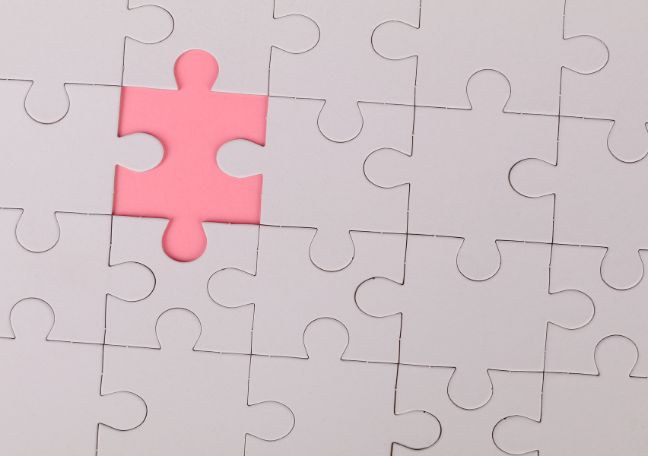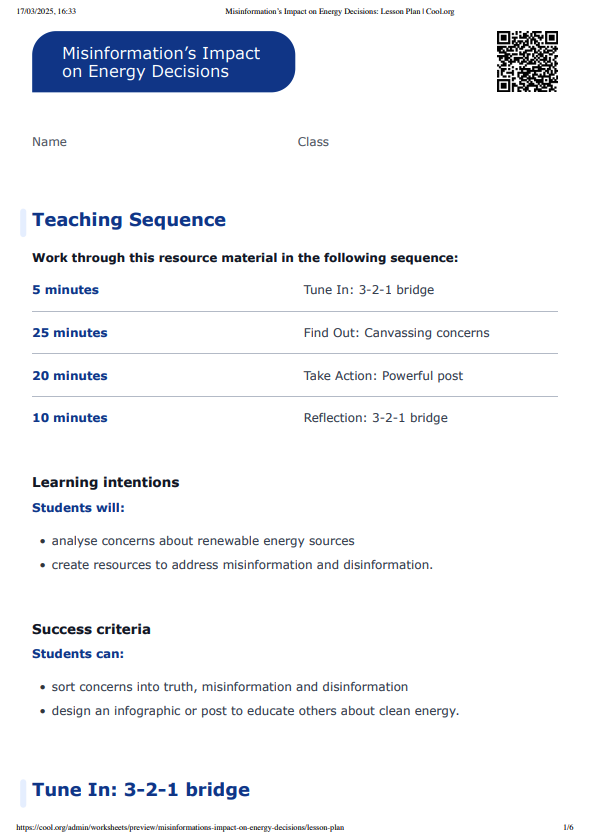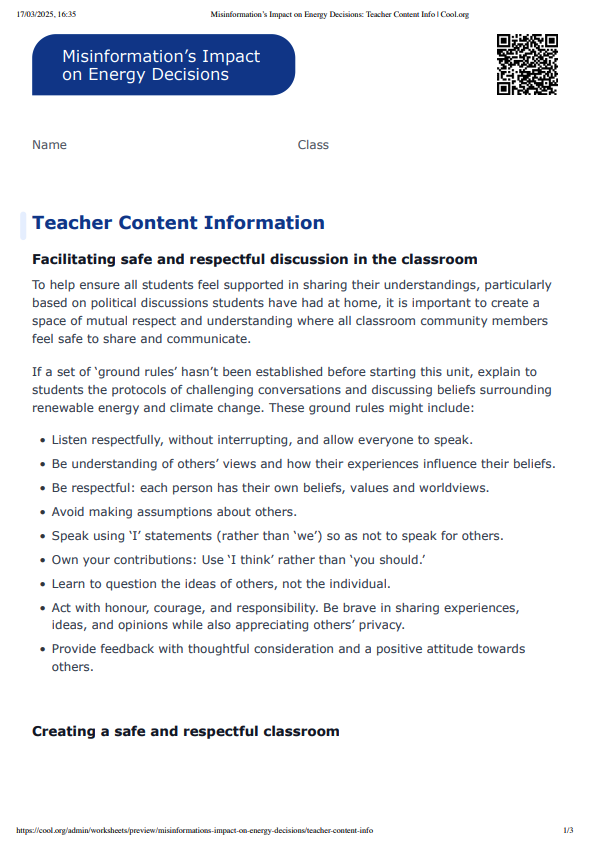Lesson summary
Students will use thinking routines and collaboratively search the web to identify truths, myths, disinformation, and misinformation about renewable energy. Using facts gathered from their research, they will use their creative thinking skills to create a social media prototype debunking a common myth.
Learning intentions:
Students will...
- analyse concerns about renewable energy sources
- create resources to address misinformation and disinformation.
Success criteria:
Students can...
- sort concerns into truth, misinformation and disinformation
- design a social media post to educate others about clean energy.
Lesson guides and printables
Curriculum links
Select your curriculum from the options below.
Lesson details
Skills
This lesson is designed to build students’ competencies in the following skills:
- creative thinking
- critical thinking
- collaboration
- communication
- community engagement
- digital literacy
- prototyping
Curriculum Mapping
Australian Curriculum (v9.0) content description:
Year 5, Science
Students learn to:
- investigate how scientific knowledge is used by individuals and communities to identify problems, consider responses and make decisions (AC9S5H02).
Year 6, Science
Students learn to:
- investigate how individuals and communities use scientific knowledge to identify problems, consider responses and make decisions (AC9S6H02).
Relevant parts of Year 5 Science achievement standards: Students identify examples where scientific knowledge informs the actions of individuals and communities.
Relevant parts of Year 6 Science achievement standards: Students describe how individuals and communities use scientific knowledge.
NSW Syllabus outcomes:
A student:
- uses evidence to explain how scientific knowledge can be used to develop sustainable practices (ST3-SCI-01).
General capabilities: Critical and Creative Thinking, Digital Literacy, Intercultural Understanding, Literacy, Personal and Social Capability
Cross-curriculum priority: Sustainability
Level of teacher scaffolding: Low - this lesson is student-led and requires minimal teacher scaffolding.
UN Sustainable Development Goals
- Target 4.7: By 2030, ensure that all learners acquire the knowledge and skills needed to promote sustainable development, including, among others, through education for sustainable development and sustainable lifestyles, human rights, gender equality, promotion of a culture of peace and non-violence, global citizenship and appreciation of cultural diversity and of culture’s contribution to sustainable development.
Resources Required
- Blank Paper
- Pens
- Student devices
- Sticky notes
Additional Info
Cool.org thanks our philanthropic funder, Boundless Earth for their generous contributions and collaboration in creating these resources.



Welcome back!
Don't have an account yet?
Log in with:
Create your free Cool.org account.
Many of our resources are free, with an option to upgrade to Cool+ for premium content.
Already have an account?
Sign up with:
By signing up you accept Cool.org's Terms and Conditions(Opens in new tab) and Privacy Policy(Opens in new tab).